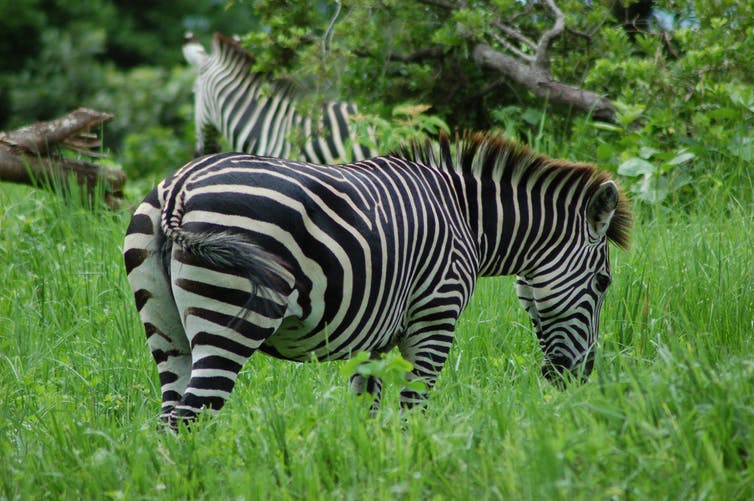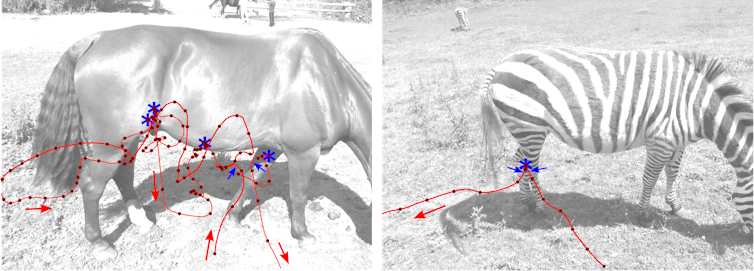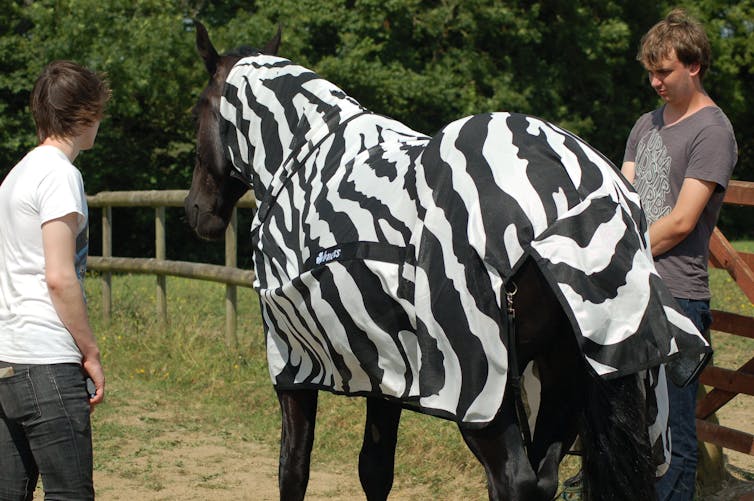Zebra’s stripes are a no fly zone for flies
Tim Caro & Martin How, The Conversation
Zebras are famous for their contrasting black and white stripes – but until very recently no one really knew why they sport their unusual striped pattern. It’s a question that’s been discussed as far back as 150 years ago by great Victorian biologists like Charles Darwin and Alfred Russel Wallace.
Since then many ideas have been put on the table but only in the last few years have there been serious attempts to test them. These ideas fall into four main categories: Zebras are striped to evade capture by predators, zebras are striped for social reasons, zebras are striped to keep cool, or they have stripes to avoid attack by biting flies.
Only the last one stands up to scrutiny. And our latest research helps fill in more of the details on why.

We think that the reason equids need to be striped in Africa is that African biting flies carry diseases such as trypanosomiasis, African horse sickness and equine influenza which can be fatal to equids. And zebras are particularly susceptible to probing by biting fly mouth parts because of their short cropped coats. Having a fur pattern that helped evade flies and the deadly diseases they carried would be a strong advantage, meaning stripes would be passed on to future generations.
Testing the idea that stripes and flies don’t mix
But how do stripes actually exert their influence on biting flies? We set out to examine this at a livery in Somerset, U.K., where horseflies collect in the summer.
We were lucky enough to work with Terri Hill, the livery’s owner. We could get very close to her horses and tame plains zebras, allowing us to actually watch flies landing or flying past the equids. We also videoed fly behavior around the animals, and put different colored coats on horses.

It is important to remember that flies have much poorer vision than people. We found that zebras and horses received a similar number of approaches from horseflies, probably attracted by their smell – but zebras experienced far fewer landings. Around horses, flies hover, spiral and turn before touching down again and again. In contrast, around zebras flies either flew right past them or made a single quick landing and flew off again.
Frame by frame analyses of our videos showed that flies slowly decelerated as they approached brown or black horses before making a controlled landing. But they failed to decelerate as they approached zebras. Instead they would fly straight past or literally bump into the animal and bounce off.

When we placed black coats or white coats or striped coats on the same horse so as to control for any differences in animal behavior or smell, again flies did not land on the stripes. But there was no difference in landing rates on the horse’s naked head, showing that stripes exert their effect close up but do not impede fly approaches at a distance.
And it showed us that striped horse coats, currently sold by two companies, really do work.